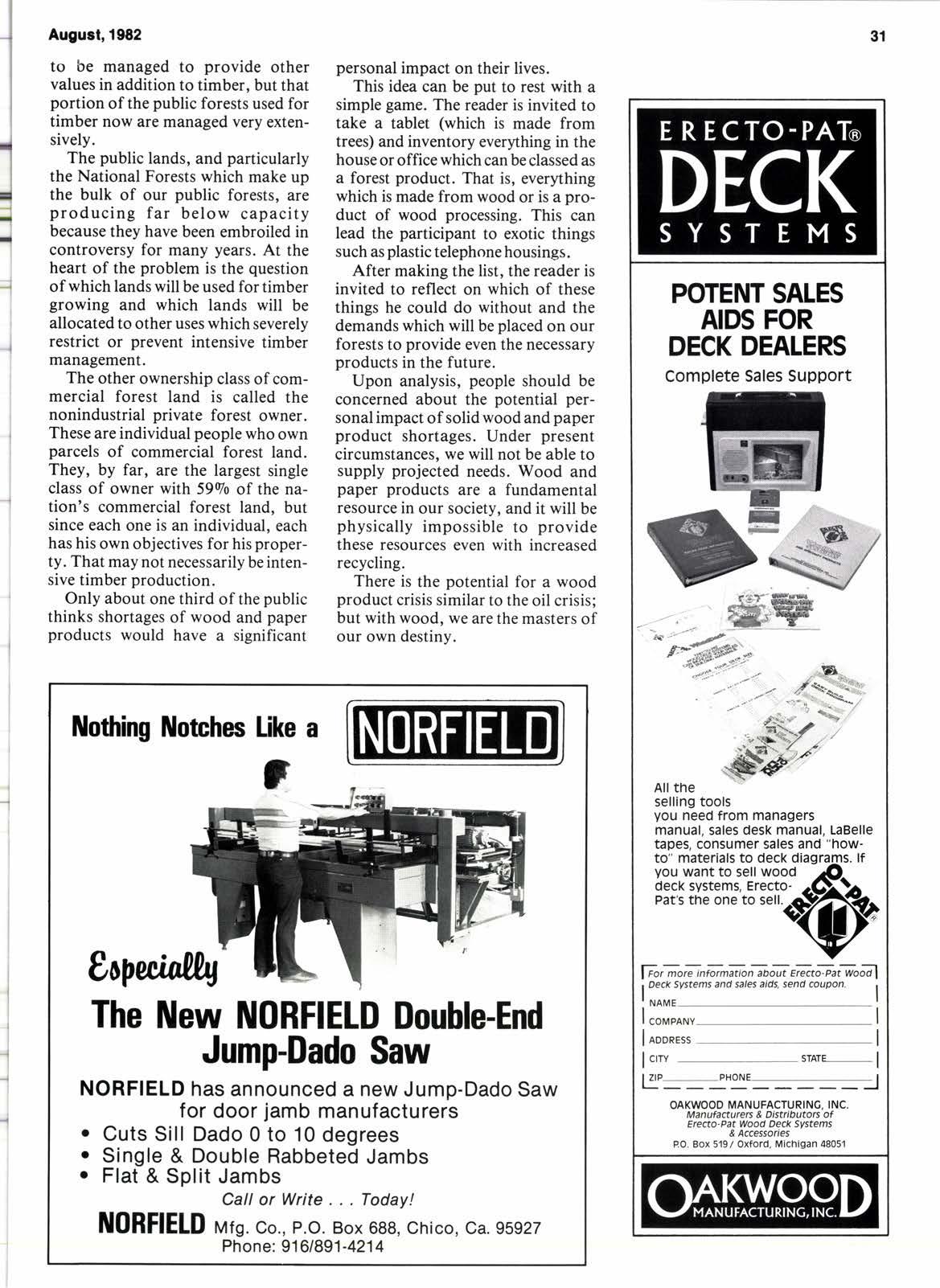
3 minute read
The coming wood crisis
By Richard G. Reid Western Timber Association
EACH YEAR the American EForest Institute, the public information arm of the forest products industry, has the firm of Yankelovich, Skelly and White conduct an opinion survey on public attitudes towards the industry.
Last year and again this year, the survey yielded a piece of information that disturbs industry and forestry leaders. The public does not feel threatened by possible shortages of solid wood and paper products, even though 8590 agree that the demand for wood will double in the next 50 years.
Levels of concern are low because most Americans think that the forest products industry, because of its good resource management prac- tices, can forestall any possible shortages. Only about one person in three among the public feels shortages of either paper or solid wood products would have a significant personal impact on their lives. There also is a widespread belief that lumber and paper products are easy to recycle.
Let's examine each of these to determine whether or not the public really should be worried about wood product shortages.
Most Americans think that the wood products industry with advanced technology can forestall any possible shortages.
It generally is acknowledged that state of the art forestry in terms of timber production is practiced on lands owned by timber companies. Unfortunately, only l39o of all the commercial forest land in the United States is owned by timber companies. Yet this share provides 37s/o of our annual harvest of softwood sawtimber, the type of timber most used in construction and for paper. Still, it generally is conceded that industry lands are only producing at about 6090 of capacity.
The biggest timber owner in the country is the federal government. On the public commercial forest lands, which constitute about2TVo of the total, there is over halfofour national inventory of standing softwood sawtimber. This huge inventory provides only 23 9o of our annual harvest. Of course, public lands are to be managed to provide other values in addition to timber, but that portion of the public forests used for timber now are managed very extensively.
The public lands, and particularly the National Forests which make up the bulk of our public forests, are producing far below capacity because they have been embroiled in controversy for many years. At the heart of the problem is the question of which lands will be used for timber growing and which lands will be allocated to other uses which severely restrict or prevent intensive timber management.
The other ownership class of commercial forest land is called the nonindustrial private forest owner. These are individual people who own parcels of commercial forest land. They, by far, are the largest single class of owner with 59qo of the nation's commercial forest land, but since each one is an individual, each has his own objectives for his property. That may not necessarily be intensive timber production.
Only about one third of the public thinks shortages of wood and paper products would have a significant personal impact on their lives.
This idea can be put to rest with a simple game. The reader is invited to take a tablet (which is made from trees) and inventory everything in the house or office which can be classed as a forest product. That is, everything which is made from wood or is a product of wood processing. This can lead the participant to exotic things such as plastic telephone housings.
After making the list, the reader is invited to reflect on which of these things he could do without and the demands which will be placed on our forests to provide even the necessary products in the future.
Upon analysis, people should be concerned about the potential personal impact of solid wood and paper product shortages. Under present circumstances, we will not be able to supply projected needs. Wood and paper products are a fundamental resource in our society, and it will be physically impossible to provide these resources even with increased recycling.
There is the potential for a wood product crisis similar to the oil crisis; but with wood, we are the masters of our own destiny.
POTENT SALES AIDS FOR DECK DEALERS complete sales support
All the selling tools you need from managers manual, sales desk manual, LaBelle tapes, consumer sales and "howto" materials to deck diaqrams. lf you want to sell wood -^O^ cleck systems, Erecto- .r(r}'.lr PatS the one to sell.


